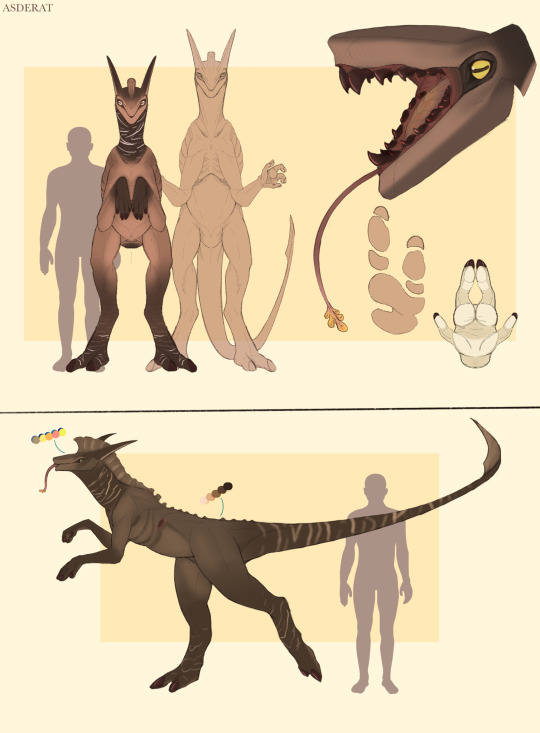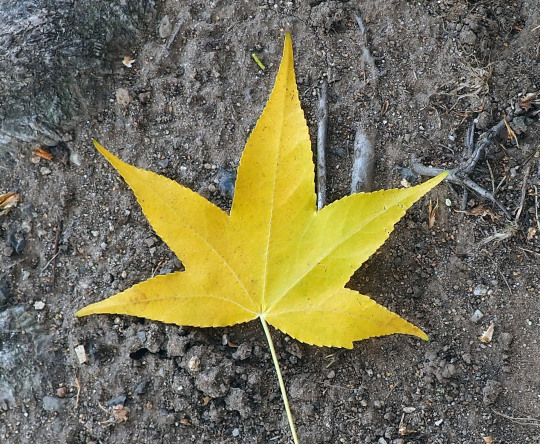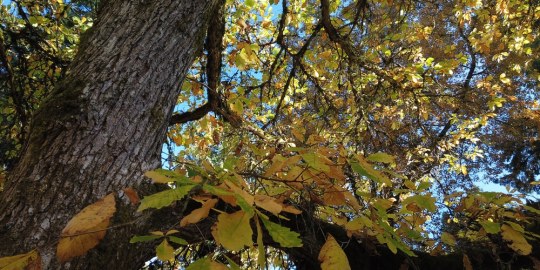#excurrent
Text
My Review of Decurrent Trees
Just because it’s winter doesn’t mean there aren’t plenty of plants to look at. Deciduous trees and shrubs become particularly interesting during the winter months with their exposed branches and their growth habits made more obvious. The beauty of a tree’s “skeletal” structure is revealed when it’s stripped of its leaves and set against a winter sky. Winter is also a great time to prune certain…

View On WordPress
#branches#Colin Tudge#dawn redwood#decurrent#excurrent#golden rain tree#growth habit#Malus#oak#pruning#reviews and recommendations#seasonal interest#Trees#trees and shrubs#urban horticulture#winter#Winter Botany#winter interest
7 notes
·
View notes
Text
Ivory Logan liked being choked
Ela tirando leitinho
Luaninha Novinha Safada e Casada do Twitter
Socando piroca na casada novinha
Asian Twinks Poi and Non Barebacking
Fat ass tinder date slow fuck coz her moms awake
Pretty big ass rides a thick black dildo
Big ass Ladyboy Barbara Perez fuck hot babe Nina Luna
Hot hunk is having an amazing gay sucking pleasure
Seductive gal is stirring wild needs with her blow job
#grinagog#caress#mightful#burnettized#excurrent#piroshki#decapodan#eleutherarch#fencers#Isolt#prefinish#hazardry#madoka#spongingly#Haemodoraceae#copiosity#unpickable#abiotical#aby#pendents
0 notes
Text

This animal is called Zngti or Jngti on the southern Shess peninsula, and Anglophone humans sometimes refer to them as "centaur dogs" or "hawkdogs." They are an omnivorous predator that occupied a niche similar to a fox prior to domestication, and now fill a variety of roles in centaur settlements. They descended from a viviparous sister clade of centaurs where the hind limbs developed into a balancing organ similar to the tail of an Earth vertebrate, but did not specialize into claspers and a pouch such as in Tep (the silk dairy livestock).
Zngti do not have a strong pack coordination instinct and are not commonly used for hunting large game or herding livestock. In some ways they're comparable to domestic cats, often left unsupervised around food storage or crops to hunt vermin, but their territoriality also makes them useful for livestock defense or sentry roles.
Although there are no commonly held breed standards, different regions may have one or two specialized varieties for different functions. For game hunting, varieties tend to have a build similar to the wildtype but with flashy coat patterns. Tunnel hunting and vermin control varieties tend to have stout bodies and a bearded face to protect them from clawing prey and dirt entering their eyes and nostrils. Bulky guardian breeds are variously used to defend livestock, property, and children from threatening wildlife or strangers. Sentry alert breeds will raise a continuous "siren" howl through their excurrent nostrils in response to intruders. Most Zngti are work animals first and companions second, but in some urbanized regions toy breeds can be found. Derived from squat vermin hunting varieties, they are usually brightly colored with concave skulls that make them resemble a trunk-smiling centaur.
Although to centaurs Zngti are relatively small animals, they are often heavier and taller than humans. Some guardian breeds can be as large as a cow.
PATREON | Runaway to the Stars
#normal dogs. ordinary dogs.#also these are the same base pigments that can be found in centaur feathers#runaway to the stars#jayart#speculative biology#aliens#speculative evolution#rtts centaurs
3K notes
·
View notes
Text

My take on a fan hawkdog because i love @jayrockin's spec guys (bc if you make spec domestics i will try to make one as cursed as possible)
An extreme toy hawkdog, the breed is called turaco since they were allegedly bred to resemble one by humans. malocclusion is a disqualifying fault in conformation but extreme deformities of the skull make crossbills much more common than in the general population. early training to tolerate beak trims is an absolute must, even individuals with seemingly aligned bites can develop a crossbill later in life. non-centaur aliens who are not familiar with the lineage's respiratory system will try to breed for bigger excurrent nostrils to offset the small and obstructed intake nostrils, however barometric plethysmography shows no statistically significant improvements in breathing. the one pictured is a neglected rescue, her name is officially Mushy Peas.
2K notes
·
View notes
Text

Doing some updates for my aliens. Read below for more! More to come.
The top half of this diagram depicts a Nexian male in a relaxed and ‘tripod’ standing position in relation to an adult human male. It also depicts typical Nexian dentition and oral/tongue appearance. Note the hard palate of the lower jaw, shearing teeth, and ‘tongue pocket.’ Below the oral diagram, a Nexian’s footprint and hand are pictured.
The bottom half of the image is a side-view of a Nexian female in relation to the same human model as above. This view clearly displays the species’ clavicular incurrent and abdominal excurrent openings used for breathing. Note the swatches on the upper left and middle of the page. These depict common Nexian eye and skin colors, respectively.
Quick Stats:
Lifespan: 50-60 yrs
Weight: 600-800 lbs (272-362 kg)
Height: 7-8.5 ft (2.13-2.59 m)
Inherent ‘magic?’: No
SUMMARY
Nexians are large, tetrapod-like sophonts once endemic to the planet Nexia. Their first contact with alien life was through a deployed Fel Autonaut during their ‘Iron Age.’
At the decision of the Fel High Command, the Autonaut was ordered to begin resource extraction despite the existence of sophonts on-planet. The resulting rapid, wholesale destruction of the planet’s biosphere left only the most fortified Nexian city-states with any survivors.
When the Autonaut’s work was done, these survivors were brought into the space-age by fleets of Fel-Trackers who surveyed the newly discovered (and now destroyed) planet.
At only 55 Earth-years after this disaster, senior Nexians still remember the carnage firsthand, while younger individuals try desperately to find a place in their galactic communities.
#my art#original#alien#aliens#original species#xenobiology#scifiart#speculative evolution#nadirus#nexians#Nexia#biology
46 notes
·
View notes
Text
SpongeBob Science Fact #1
Remember when SpongeBob did this in “I Had an Accident”?

Sea sponges, much like flamingos, oysters, and baleen whales, obtain nutrients through a method known as filter-feeding. First, water is drawn inside the sponge through the smaller openings called incurrent pores. As the water passes through the sponge’s various channels and chambers, bacteria and microscopic particles are taken in as food, and oxygen particles transfer into the sponge’s cells through simple diffusion. Then, the water exits the sponge through the larger openings called excurrent pores, letting out waste products like carbon dioxide, nitrogen, and ammonia.

So, SpongeBob was not lying when he said, “I’m a sponge, I’ll just filter feed.” Plus, “Feral Friends” did go on to further prove this fact years and years later by showing a de-evolved SpongeBob doing exactly that while in Sandy’s observation tank, so that’s a plus I would say.
#🌟#SBSP#Text#SpongeBob SquarePants#That’s non-toxic fluorescein dye erupting out of the sponge BTW - it’s inserted by divers to help them visualize and study...#... the filter-feeding process up close. It doesn’t harm the sponge at all - I promise.
44 notes
·
View notes
Text
Time to make some fauna for Gloreal planet I feel like it. Just gotta figureee some framework for lifeforms which survived and which took over the evacuated niches after the moon got launched into a different orbit—
PreLuna traits that survived in very few species: Four incurrent, Four excurrent for breathing; GLOSSY filaments; antenna paired w internal hearing; Symbiotic with plant life like 80% of the time; Crescent Pupils; Multiply mandibular (lots of mouth parts); Any glowing a result of diet/environmental cues.
PostLuna traits: Re-evolved ‘flight’ (in tHIS WIND?); Two holes for inhaling, four for exhaling; Scrunkly filaments; internalized hearing; Aerodynamics; being sticky or slick; Multiple Pupils; Simpler mouth parts; Internal control of their glowing.
And ofc random traits in either work jus fine…. 🤔
3 notes
·
View notes
Text
Canal System in Sycon
All sponges have a poriferated body surface with many apertures for the entrance and exit of water current.
Water flows inside the body of the sponge by a system of spaces called the canal system.
There are three types of canal systems: Ascon, Sycon, and Leucon.
Sycon type of calan is more complex than ascon.
Is it characteristic of syconoid sponges like Sycon.
Theoretically, sycon type can be derives from asconoid type but with horizontal folding of the wall.
Body wall includes 2 types of canals: incurrent and radial. They are parallel and alternate.
Both end blindly in the body wall but are interconnected by minute pores.
Dermal ostia or incurrent pores are found on the outside of the body, open into incurrent canals.
Incurrent canals are non-flagellated and are lined by pinacocytes. They lead inot the radial canals through minute pores called prosophyles.
Radial canals are flagellated chambers lined by chanocytes, open into central spongocoel by internal ostia.
Internal ostia are aka apopyles.
Spongocoel is a narrow, non-flagellates cavity lined with pnacocytes, opens to the outside thought an excurrent pore called the osculum.


0 notes
Text
fun fact, since drekol talk with their through lung, which has two excurrent vents, certain skilled drekol can say two seperate things at once, this skill is more or less culturally equivalent to magic tricks
#kikis rambles#drekol#speculative world#silly little fellas#fucked up organs#eating mouth really put me through a loop#all things considered#since their herbivores and their plants are made of glass#and i didnt wanna just give them jaws#so i spent a week just drawing diagrams on sai#and i settled with one i didnt even draw#i just thought it up#lotred#spec bio#speculative biology
1 note
·
View note
Text
Metasequoia glyptostroboides gold rush

#Metasequoia glyptostroboides gold rush full#
Dilworth, assistant professor of forest management, recently received a packet of dawn redwood seeds from Arnold Arboretum, Jamaica Plains, Massachusetts. The Daily Barometer (June 3, 1948) reported that Professor J.R. campus: two trees, young and older, northeast of Community Hall The Story of the Discovery and Naming of Dawn RedwoodĬorvallis: tree in Riverfront Park, just south of the Harrison Ave.Metasequoia flourished in the Miocene epoch of 25 to 5 million years ago and left its record embedded in rocks across the Oregon landscape. State Fossil of Oregon: The Oregon legislature designated the Metasequoia as the official state fossil in 2005. 'Miss Grace' - more or less ground sprawling, but if staked, a small tree with weeping branches.'Gold Rush' - bright yellow foliage in spring and retains much of the color throughout the summer.Several cultivars are available, including: Hardy to USDA Zone 4 Native to Sichuan (Szechuan, Szechwan), China. Easy to transplant, performs best in moist, well-drained, slightly acid soils. Bark reddish brown when young, darker, fissuring, and exfoliating in strips when mature. Needles 15 mm long, opposite, straight or slightly curved, bright green above, light green below. Photographed at Savage Plants in Kingston, Washington.Deciduous conifer, 70-100 ft (21-30 m), excurrent, pyramidal, flat topped when mature. Now if you will excuse me, I need to go negotiate myself some visiting rights for a tree next door. If you have room to grow this conifer, it will be a stunning addition to your landscape. It is, however, important to give it some irrigation during our long summer drought. The bark is interesting on this deciduous tree, with deep fissures, giving it winter interest. In spring, the needles return an almost chartreuse yellow color. It then turns orange-brown in fall, when it sheds its needles. Metasequoia 'Gold Rush' keeps its coloring well into summer. I wonder, is he trying to show me up by planting a living relic in his backyard? So now I can enjoy the view of his tree from my back yard. Thankfully, my young friend, a beginning gardener who lives next door, bought one and planted it. I could plant it, but eventually it would outgrow the space I have available. I went home to try to find room for just one more tree in my garden. I found myself smitten with its fall coloring one day in the nursery.
#Metasequoia glyptostroboides gold rush full#
In the Pacific Northwest, the gold foliage will not burn in full sun, unlike other gold foliage that has this tendency. It has not been in cultivation long enough for it to reach its full potential. This is a fast-growing tree, reaching 15-20 feet in ten years, after 20 or more years it will reach 50 feet. The name, Metasequoia, comes from the Greek word meta, meaning changed and refers to sequoia, which it is related to. Dutch horticulturalist Peter Zweinburg brought it to Europe and changed the name to 'Gold Rush'. Metasequoia glyptostroboides 'Gold Rush' was found as a seedling in Japan and was named 'Golden Ogi', which means the golden mantle. Michael Dirr once wrote, "This tree provides a case history of perhaps how endangered species should be managed. Now, it is once again growing on this continent. This tree grew on the North American continent over 15 million years ago. Once thought to be extinct, Dawn redwood was discovered in 1944 in China, soon after million year old fossils from Metasequoias were found in Japan.

1 note
·
View note
Text
Winter Trees and Shrubs: Sweetgum
Sweetgum is a distinctive tree at any time of year. It stands out among most other deciduous trees with its excurrent growth habit, which gives it a narrowly conical or pyramidal shape. Only in its advanced age does it begin to develop a more rounded and irregular form. Its leaves are star-shaped with either five or seven lobes and span between four and seven inches. Their glossy green color…

View On WordPress
#Altingiaceae#bark#branchlets#buds#Dispersal Stories#fall color#fruits#gumballs#leaves#lenticels#Liquidambar styraciflua#pith#plant anatomy#plant identification#plant taxonomy#resin#seasonal interest#sweetgum#winter buds#winter twigs
12 notes
·
View notes
Text
Virginia Oak Trees: 14 Common Varieties
Virginia Oak Trees: 14 Common Varieties
Virginia experiences a mild climate which favors the growth of a variety of trees. However, today we’re going to be focused on oak trees. Check below the oak trees native to Virginia.
Virginia Oak Trees
Here are fourteen varieties of oak trees that you’ll find in Virginia:
White Oak (Quercus alba)
White Oaks exhibit excurrent growth and feature a rounded, spreading crown. The term excurrent…

View On WordPress
0 notes
Text
basic moss reseach
Campylopus pallidus on heated ground, Craters of the Moon thermal area, Rotorua.- This moss is found world-wide and is common on old logs and rotting vegetation and on the soil. It is also found on the heated ground of geothermal areas in New Zealand and the Antarctic. Formerly C. pyriformis.
https://www.nzplants.auckland.ac.nz/en/about/mosses/structure/extreme-environments.html
Macromitrium sp.- A small creeping moss, common on trunks or branches of smooth-barked trees or on rock.
https://www.nzplants.auckland.ac.nz/en/about/mosses/structure/form-and-size.html
Amblystegium serpens has very delicate, slender stems with widely-spaced, minute leaves up to 1 mm long. The seta (capsule stalk) is curved when dry and the calyptra covering the smooth, horizontal capsule is pale-to-white.
Widespread in New Zealand on moist soil, rock and wood.
https://www.nzplants.auckland.ac.nz/en/about/mosses/native-species/amblystegiaceae/amblystegium-serpens.html
Barbula unguiculata is a yellow-green moss that forms cushions up to 5 mm high. The leaves are spreading and 1-2 mm in length with recurved margins and protruding tips (excurrent as a sharp spike). The leaves are strongly curled when dry. Its much shorter setae (6-10 mm) distinguish it from B. calycina.
Widespread in New Zealand on exposed rock, walls and dry earth.
https://www.nzplants.auckland.ac.nz/en/about/mosses/native-species/pottiaceae/Barbula-unguiculata.html
Brachythecium plumosum has long, branching and creeping stems with widely spreading leaves containing a single vein (nerve) which runs at least half way up the leaf. The capsule stalk (seta) is papillose in its upper part.
Widespread in New Zealand where it forms mats on rock along streams.
https://www.nzplants.auckland.ac.nz/en/about/mosses/native-species/brachytheciaceae/brachythecium-plumosum.html
Bryum argenteum is a small moss that forms dense patches of silvery-green plants no more than 1 cm in height. The broadly ovate leaves are closely appressed to the stem and have a short, sharp tip. The silvery hue to the plants is due to the fact that the upper cells of each leaf lack chlorophyll .
Widespread in New Zealand, especially common in urban environments but also in natural areas such as exposed sea cliffs. .
https://www.nzplants.auckland.ac.nz/en/about/mosses/native-species/bryaceae/bryum-argenteum.html
Calliergonella cuspidata is a moss of moist, open places often found intermingled with grasses and sedges. The stem tips taper to a smooth, sharp point and bear shiny elliptical leaves that taper to a sharp tip. Formerly Acrocladium cuspidatum
An introduced, invasive moss.
https://www.nzplants.auckland.ac.nz/en/about/mosses/native-species/amblystegiaceae/calliergonella-cuspidata.html
Bryum argenteum in crack of boardwalk, urban moss
https://www.nzpcn.org.nz/flora/non-vascular/bryophytes/mosses/
0 notes
Photo


Random young Talita doodles with her foster caretaker Douglas. Kids are so cute and sweet before they start having opinions!
Infant Talita’s alarm call sounds like a fire alarm with low batteries. Her cry, created by clenching the excurrent nostrils on her sides, sounds like a small dog’s growl pitched down. Her voice when she first starts talking is warbling and unnervingly high-pitched, like a cartoon bird.
PATREON | STORE | Runaway to the Stars
6K notes
·
View notes
Text
Which of the following is the best explanation for the excurrent (pyramidal) shape of Pinus (the branches giving the plant the appearance of a tall cone)
Which of the following is the best explanation for the excurrent (pyramidal) shape of Pinus (the branches giving the plant the appearance of a tall cone)
(a) Competition among adjoining trees for sunlight
(b) The effect of auxins on growth of stem tips
(c) Adaptation for wind pollination
(d) Efficiency of water transport from ground to leaves
Ans. c
View On WordPress
0 notes
Text
Bruce (@rabbruad1) wrote:
‘Whenever we go to the beach for a swim, Elle always first checks up on current events.’
I like to know where the current currents are, and concurrently, their speed. I once saw a current of red currants racing in an incurrent torrent, when the strangest thing occurred; A blackcurrant caught an undercurrent like an excurrent pipe to speed forward and win the race. It was quite the sight, right Bru?
33 notes
·
View notes